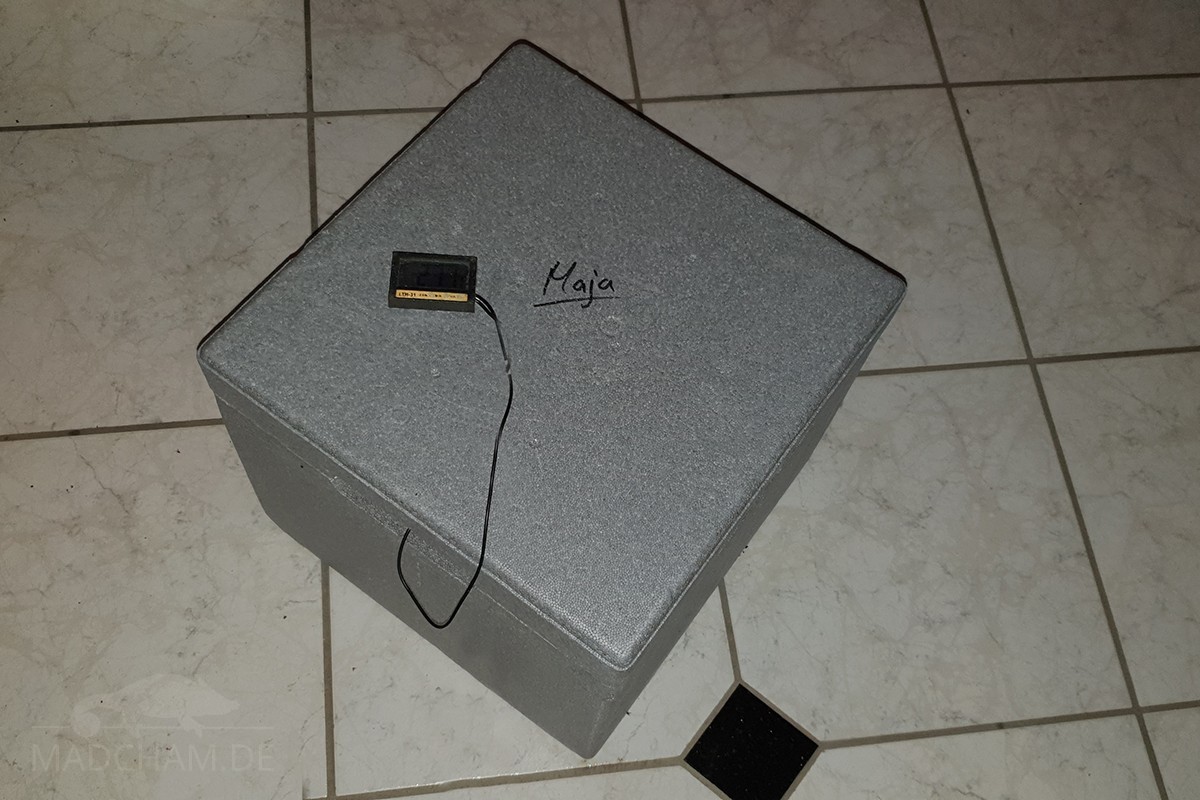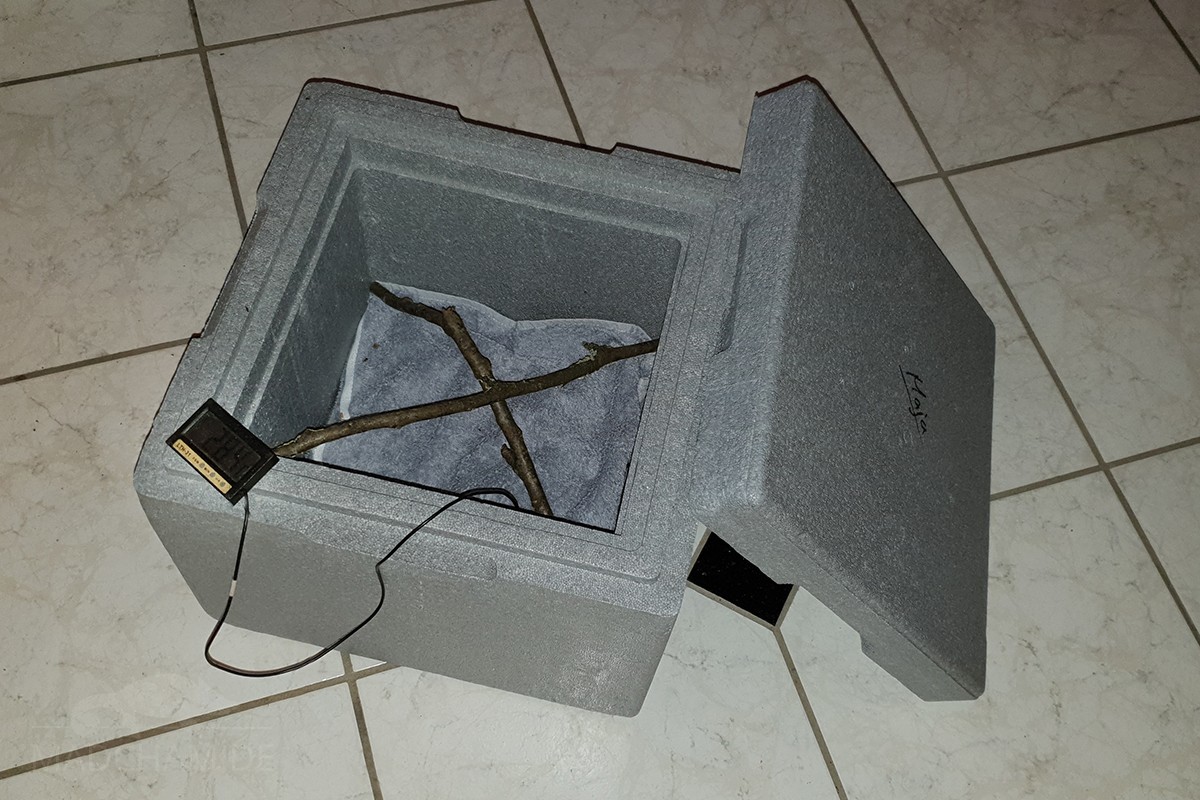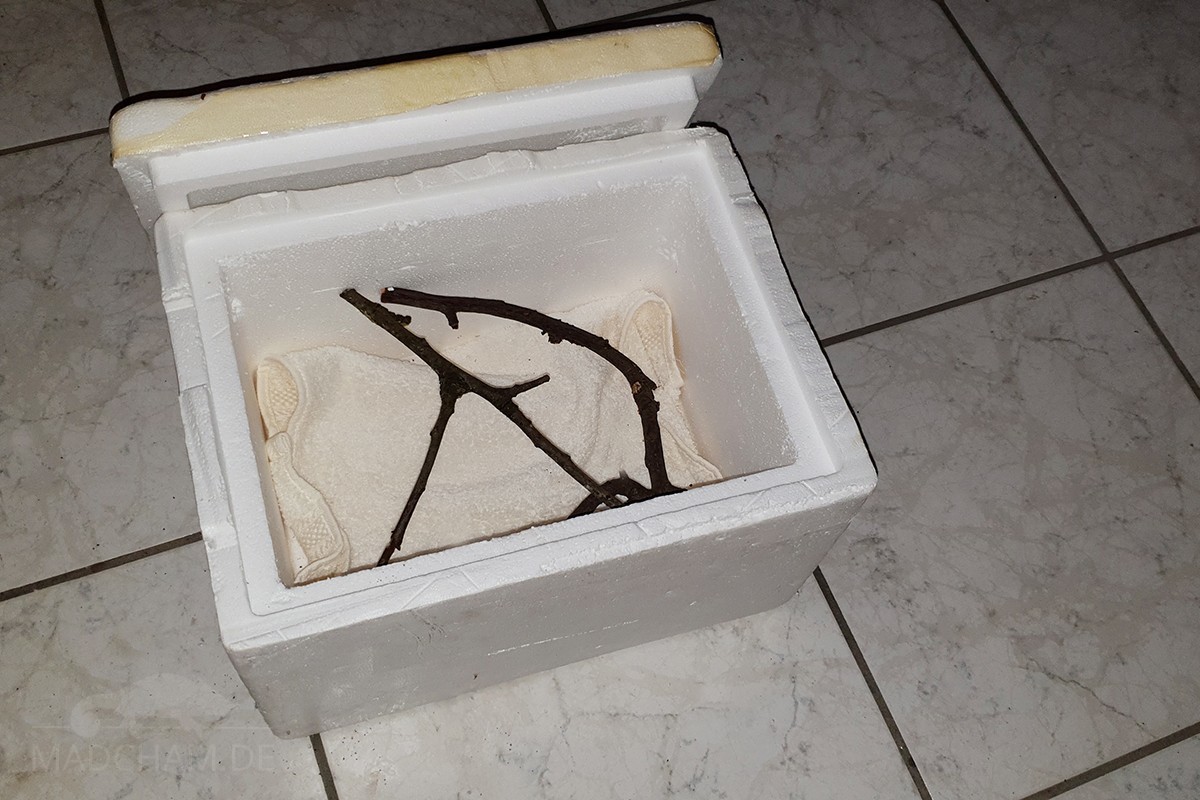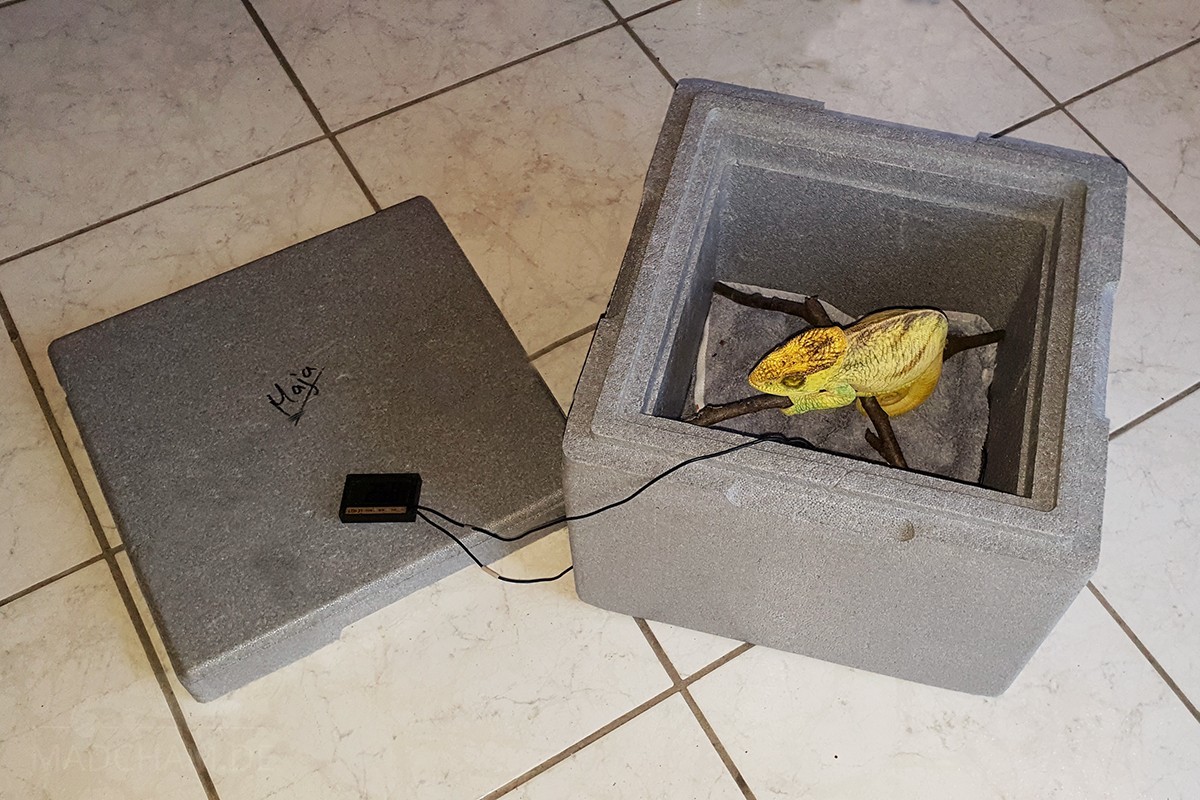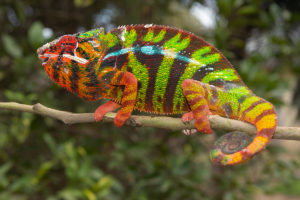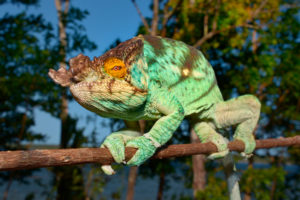From the breeder’s home, to the vet or when selling a young animal: At some point comes the time when you have to transport your chameleon. Like all reptiles, chameleons are ectothermic, so their body temperature depends on their environment. Therefore, a suitable transport option must be heated and insulated to prevent the chameleon from cooling or overheating during transport. For example, a cooled down animal can no longer be fully examined by a veterinarian or not reasonably inspected by the buyer. A plastic box in the car with the heating switched on or even a shoe box is not enough!
Basically, a separate transport box should be available for each chameleon. If several chameleons have to be transported at the same time, each chameleon should have its own box with privacy screen to other animals.
The best choice for transporting chameleons is a tightly closing polystyrene box, ideally with a smaller, easy-to-clean plastic box for each individual chameleon inside. Plastic is the material of choice for the interior box(es), as it is best to clean. So-called fauna boxes have proven themselves in small and larger chameleons. A moistened kitchen paper can be placed in the box. In addition, a branch should be clamped in or glued in with aquarium silicone, on which the chameleon can sit comfortably and securely. The branch must be fixed in such a way that it neither slips nor wobbles. For very small chameleon species such as some Brookesia, commercial cricket boxes may be sufficient. However, especially for very small and ground dwelling chameleons the boxes should be provided with some leaves and moss in which the animal can hide.
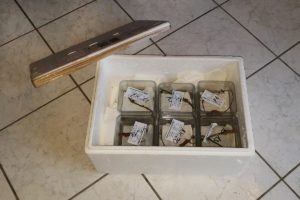
Parson’s offspring individually in plastic boxes with one branch inside each. To prevent the boxes from slipping inside the polystyrene box, the empty spaces were filled with kitchen paper.
The closed plastic box with the chameleon is placed in a polystyrene box with a hot-water bottle on the bottom. The temperature should be warm, but not exceed 35°C. It is always advisable to attach a small, digital thermometer with a sensor on the hot water bottle or heat source to the crate, even in hot water bottles or in summer when the outside temperature is sufficient. This allows you to control the temperature inside the transport box without having to open the box. A polystyrene box without any heat source is useless by the way – because the chameleon is ectothermic, it cannot warm the box with its own body temperature.
The closed polystyrene box offers warmth and darkness, so that the chameleon normally goes to its sleeping position and simply sleeps through the whole transport. This avoids any unnecessary stress. Please do not drill any holes in the polystyrene box! This is not only senseless, but even absurd: the insulating properties of the polystyrene and the darkness in the box are lost through “ventilation holes”. However, a transport box does not need any ventilation holes at all. The air in the box is sufficient for several hours without any problems, so the lid does not have to be lifted during transport.
An alternative to the polystyrene box are commercial cool boxes, which also keep the temperature of a hot water bottle well and completely darken the inside. Some holders also transport their animals directly in the polystyrene box, without another plastic inner box. However, this has the disadvantage that it is harder to clean and every chameleon needs its own box. With large chameleons one should also consider that they may open a light, not very tightly fitting polystyrene lid just by pressing their head on it from the inside. Here, too, a firmly lockable plastic box inside a large polystyrene box is more suitable.

